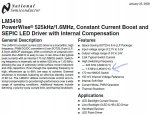- Joined
- Aug 25, 2007
- Messages
- 2,007
- Points
- 63
The experiment was intended to find out if it is possible to get more mW per mA on average using pulsed modulation. It turns out that it is, but only at fairly low power levels, mainly because of the diode threshold sort of 'taking the first 70 mA' without resulting in any light.
That said, it doesnt work at higher power levels because the mW/mA flattens off so it only results in a loss from a certain point (see the other thread for details).
If the slope of the line mW/mA, ie the differential efficiency, is dropping with increasing power while pulsing, then you're not pulsing fast enough (I believe you were doing kHz, so indeed, you weren't pulsing fast enough). Heating effects in a laser take less than a microsecond, so any pulsewidth greater than that isn't helping with heating.
That drop in differential efficiency, the slope of the line, is due to heat. Pulsing a laser removes that effect of the heat, but only if you pulse for short enough times for the heating effects to not have time to happen (wow, what an ugly sentence).
Pulsing will allow you to get more mA/mW, ie increase the slope of the L-I curve, on the high end where roll-off is occurring, if you pulse fast enough to negate the heating effects.




